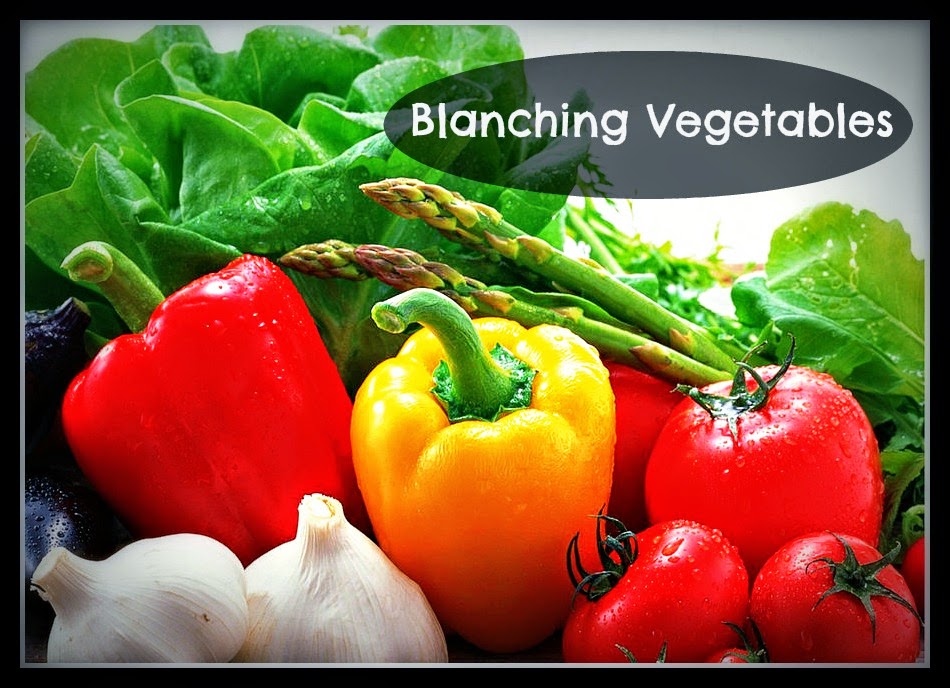
How to Freeze Potatoes and Other Vegetables – Blanching
As we started to prepare our make ahead freezer meals, we noticed that many of the meals included vegetables, namely potatoes. I did a lot of research on this and found that many people were commenting that the potatoes turned black, lost their texture, and so many other things. For this reason, I started doing some research on how to prevent this problem and the consensus was blanching vegetables before you freeze them or just add the vegetables the day of cooking. I had never really heard much about blanching before so I wanted to make sure that I completely knew how to do it before I passed the information on to many of you.
Here is what I found out:
Freezing is a great way to preserve foods, but when it comes to vegetables, there is more to freezing than putting foods directly into the freezer. When foods are frozen, their enzyme action is slowed, but not stopped. One solution to this problem is blanching vegetables before you freeze them. Blanching stops food’s enzyme action and reduces your risk of food poisoning.
What Is Blanching?
Blanching is a process where vegetables are exposed to boiling water or steam for a brief period and then rapidly placed in ice water to prevent cooking. Blanching stops the food’s enzyme action and destroys any microorganisms present on the vegetables surface reducing your risk of food poisoning.
It is important to follow the recommended times for blanching each vegetable because overbalancing results in cooked produce with a loss of flavor, color and nutrients, and under-blanching can cause the enzymes to continue ripening the food. Check out the blanching chart below for proper blanching times.
Why Blanch?
Here are a few reasons to blanch vegetables:
- Blanching stops enzyme actions which can cause loss of flavor, color and texture.
- Blanching brightens the color and helps slow the loss of vitamins.
- Blanching cleanses the surface of dirt and organisms.
- Blanching wilts or softens vegetables and makes them easier to pack.
How To Blanch?
Blanching can be completed using boiling water, steam or a microwave oven – I think boiling is the best way 🙂
Boiling Water: Use one gallon of water per one pound of vegetables and two gallons for leafy greens. Place vegetables in a wire basket, lower into boiling water and then cover. Keep in mind water should return to boiling within one minute or you are using too little water. As soon as water returns to a boil, start counting blanching time.
Here are blanching times for the most common vegetables that we will use for our freezer meals:
- Asparagus: 2 minutes
- Broccoli: 3-5 minutes
- Carrots: 3-5 minutes
- Celery: 3 minutes
- Mushroom slices: 3 minutes
- Onions – 3-7 minutes
- Peppers: 2 minutes
- Potatoes: 3-5 minutes
Cooling: Vegetables should be cooled quickly and thoroughly to stop the cooking process immediately after blanching. Plunge the vegetables into a large bowl of cold water (60ºF or below). Change water frequently or use cold running water or ice water. If you use ice, you need one pound of ice for each pound of vegetable. It should take the same amount of time to cool vegetables as it did to blanch them. Drain vegetables thoroughly after cooling because extra moisture can reduce quality when vegetables are frozen.
Thanks, EatRight.org for this info

This post may contain affiliate links. Read my complete Disclosure Policy Here



 My name is Joni Meyer-Crothers and I run this couponing/money-saving blog along with my husband, Jamie. We love to show others how to save money in a BIG way! We do all the work for you. . we do the matchups and show you where to get the coupons, many FREE printable coupons. Sit back and follow the blog and watch your savings increase! Couponing is a ministry for our family as we we love to show others how to save and share from their couponing harvest!
My name is Joni Meyer-Crothers and I run this couponing/money-saving blog along with my husband, Jamie. We love to show others how to save money in a BIG way! We do all the work for you. . we do the matchups and show you where to get the coupons, many FREE printable coupons. Sit back and follow the blog and watch your savings increase! Couponing is a ministry for our family as we we love to show others how to save and share from their couponing harvest!
